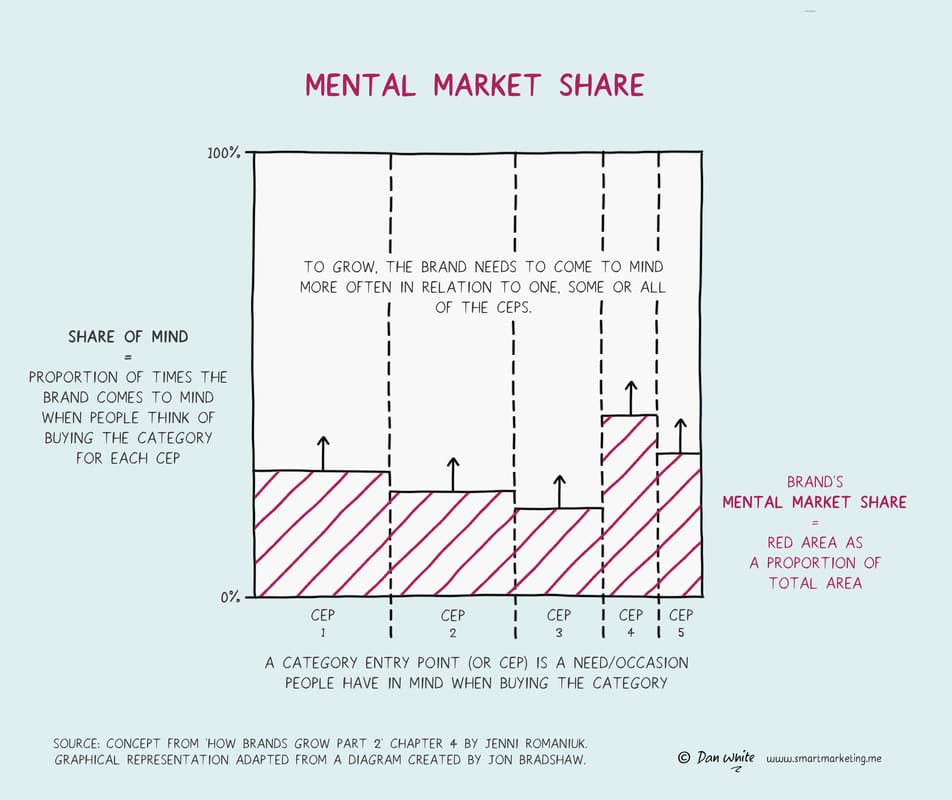- The Content Loop
- Posts
- ♾️ Category Entry Points (CEPs)
♾️ Category Entry Points (CEPs)
The framework that stops you from shouting into the void

You’re reading The Content Loop — a 5-min read on how B2B SaaS marketers can use original research and product-led content as a growth lever.
Did someone forward this email to you?
I've spent the better part of the last 9 months wrangling dozens of content requests from clients. Right from Slack notifications to email threads—and my content roadmaps, things got overwhelming fast.
You know that feeling when your brain just...short-circuits? 🫠
I know I needed a project management tool to bring everything together. Within seconds, I had three brands in mind: ClickUp, Airtable, and Trello.
I’ve used all of these in the past for different use cases. But I finally chose Airtable and Trello for different purposes.
But here's what hit me later (and made me feel a little stupid, if I'm being honest). None of these brands convinced me to think about project management in the first place.
The moment—the chaos of juggling multiple clients and missing deadlines—did that work for them.
Meanwhile, most of us are sitting here asking ChatGPT for blog topics or running keyword reports hoping Ahrefs will tell us what our audience wants to read.
This is the thing we keep getting wrong about product-led content.
We think it means talking about our product more. But that's like showing up to someone's house fire with a garden hose manual instead of, you know, water.
People don't start their buyer journey thinking, "I need an AI-powered multi-channel CRM." They start thinking, "We're losing deals because we can't follow up fast enough, and I'm about to get fired."
That moment of panic? That's your Category Entry Point.
The framework to build mental market share
Category Entry Points (CEPs) are a framework from the Ehrenberg-Bass Institute that identifies the buying situations or moments when a category first comes to mind for someone.
Basically, it's the "oh crap" moment that makes people realize they need a solution.
Here’s an excellent visual by Dan White to put this into perspective:

CEPs and mental market share (Source)
When you think about product-led content, most B2B SaaS marketers start with what our product does, then try to reverse-engineer reasons why someone should care. It's like writing the conclusion of an essay first, then scrambling to find evidence that supports it. IYKYK.
But buyers don't think that way. They start with a problem moment, consider what category of solution might help, then evaluate specific options.
How to use CEPs to plan product-led content?
When I plan content, I map out the CEPs first. What are the specific moments when someone in our target audience goes, "This isn't working anymore. I need help."?
Then I build content around those moments, not around our feature list.
If I'm working with a sales enablement platform, I don't start with "Here's how our Salesforce integration works." I start with "Your sales team missed quota for the third month in a row, and your VP of Sales is asking uncomfortable questions in the weekly meeting."
That sinking feeling in someone's stomach triggers the need for sales enablement tools.
Here's how I think about it now:
CEP is the moment when someone realizes they have a problem. This becomes your content theme—the big picture narrative you build around.
Jobs-to-be-Done (JTBD) is the specific work they need to accomplish to fix that problem. This becomes your content depth—the individual pieces about features and use cases.
I used to confuse these two all the time because they seem the same, but in actuality, they're not.
Take Intercom and Zendesk (customer support software), for example. Neither one of them invented the problems they solve. But they both show up when people hit these moments:
"Our support tickets are piling up faster than we can respond, and customers are getting angry."
"People keep asking the same basic questions, and we're wasting hours explaining the same thing over and over."
"We're trying to help customers across email, chat, and social media, but everything's disconnected, and stuff is falling through the cracks."
Instead of leading with features, you lead with moments. Instead of talking about what you do, you talk about when they need you.
Once I've nailed the CEP, I can map how our product solves the problems within that moment. That's where JTBD comes in.
This completely changes how you approach product-led content.
Because you're not trying to convince them they need your solution category. You're showing up exactly when they already know they do.
When you get this right, something shifts. Your content starts feeling more relevant. People actually read it instead of bouncing after 10 seconds. And you stop feeling like you're shouting into the void about features nobody asked about.
You become the brand that shows up right when someone needs you most—not when you need them to buy.
P.S. Liked the issue? Share it with someone who could benefit from it.
That’s all for today!
As always, if you have any questions or feedback, hit “Reply” and let me know 😄
Reply